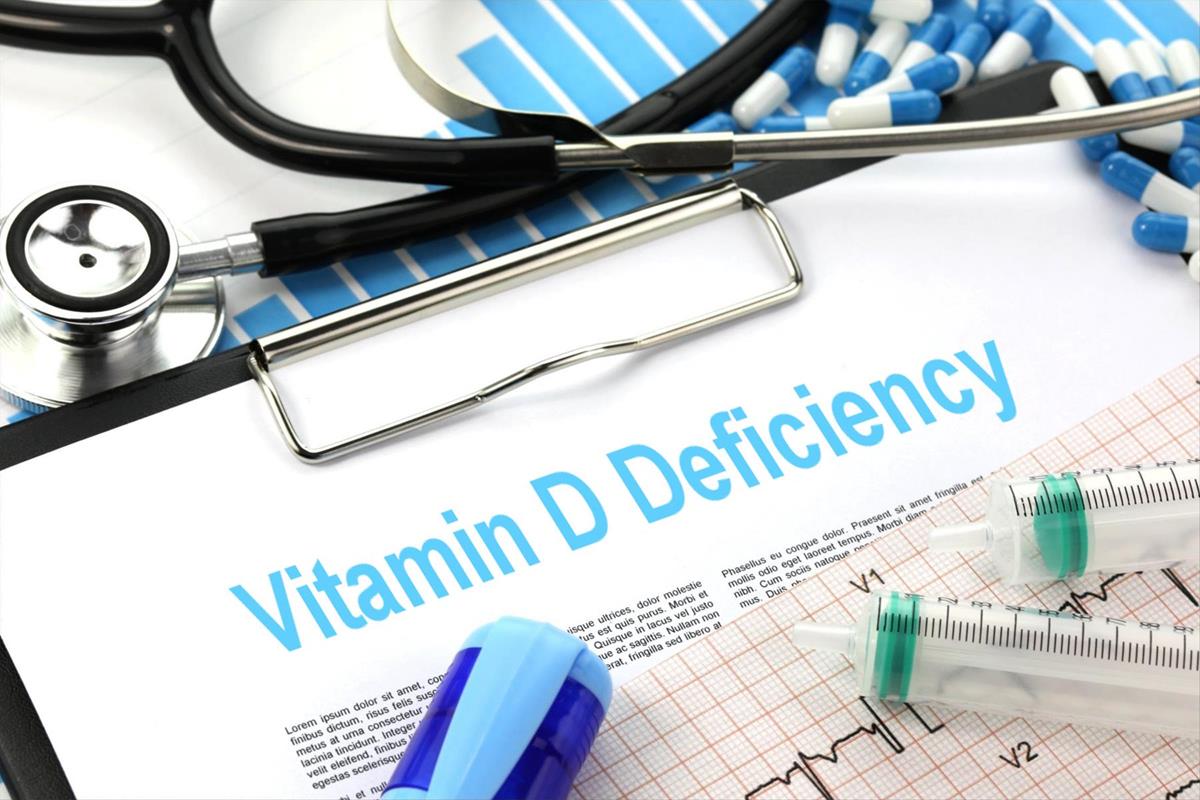
In the intricate symphony of our body’s functions, vitamins play an indispensable role, acting as silent conductors orchestrating countless metabolic processes. These organic molecules, though required in small quantities, are absolutely essential for proper metabolic function. They are the unsung heroes of our daily well-being, tirelessly working behind the scenes to keep us healthy and vibrant. Among these vital nutrients, Vitamin D stands out for its unique, hormone-like functions and its profound impact on our overall health.
Often associated primarily with bone health, Vitamin D’s influence extends far beyond skeletal support, regulating mineral metabolism for bones and other crucial organs. Understanding the subtle cues and mechanisms of its deficiency is paramount, as a shortfall in this vital nutrient can lead to clinically significant illnesses. While severe deficiencies like rickets might seem like relics of the past in much of the developed world, less obvious inadequacies can still compromise health, often going unnoticed until more serious complications arise.
This in-depth exploration aims to shed light on Vitamin D, from its fundamental roles to the insidious ways its deficiency can manifest. We’ll examine not just the direct consequences, but also the various pathways through which a lack of Vitamin D can develop, and how our bodies cope, or fail to cope, with dwindling reserves. By understanding these crucial insights, we empower ourselves to better safeguard our health and recognize the importance of consistent intake of this irreplaceable nutrient.
1. **The Essential Role of Vitamin D: A Hormonal Conductor for Your Body**Vitamin D is far more than just another nutrient; it functions with a profound, hormone-like capacity within our bodies. Its primary and most extensively researched role lies in “regulating mineral metabolism for bones and other organs.” This sophisticated regulation is critical for maintaining the structural integrity of our skeleton, ensuring bones remain strong and resilient throughout life. Without adequate Vitamin D, the delicate balance of calcium and phosphate—the building blocks of bone—is disrupted, paving the way for serious health complications.
This hormone-like action means Vitamin D doesn’t just passively participate in bodily processes; it actively directs them, much like a conductor guiding an orchestra. It ensures that the minerals we consume are properly absorbed from the gut and deposited where they are needed most. This intricate dance of regulation is vital not only for bone health but also for the optimal functioning of numerous other organs and systems within the body, underscoring its broad biological importance.
The ramifications of insufficient Vitamin D in this regulatory capacity are significant, impacting more than just bone density. While the most well-known deficiency diseases manifest in the skeletal system, the pervasive nature of Vitamin D’s functions suggests that its deficiency could have far-reaching, if less obvious, consequences. Maintaining optimal levels of this essential nutrient is therefore a proactive step towards supporting robust physiological health across the lifespan, from childhood development to adult maintenance.

2. **Rickets: The Childhood Consequence of Vitamin D Deficiency**Rickets stands as a stark historical and contemporary reminder of severe Vitamin D deficiency, particularly impacting growing children. This debilitating condition is a “well-researched human vitamin deficiency” disease, directly linked to inadequate calciferols, the vitamers of Vitamin D. When children’s bones are actively growing and developing, a persistent lack of Vitamin D disrupts the crucial process of mineralization, leading to soft, weakened bones that can bend and deform under the body’s weight.
The visible signs of rickets can be quite distressing, presenting as bowed legs, thickened wrists and ankles, and a delay in growth and development. Historically, rickets was rampant in regions with limited sunlight exposure, especially during industrialization when children spent significant time indoors. The context highlights that “in much of the developed world these deficiencies are rare due to an adequate supply of food and the addition of vitamins to common foods,” yet vigilance remains key, as pockets of vulnerability can still exist, particularly in children with specific dietary restrictions or reduced sun exposure.
The skeletal deformities caused by rickets can lead to significant pain, impaired mobility, and permanent physical changes, impacting a child’s quality of life. Understanding rickets not only sheds light on the severe consequences of Vitamin D deficiency but also emphasizes the critical need for adequate Vitamin D intake during the formative years. It underscores why pediatricians and health organizations worldwide emphasize strategies for ensuring children receive sufficient amounts of this vital nutrient, through diet, sunlight, or supplementation.

3. **Osteomalacia: When Adult Bones Soften from Vitamin D Inadequacy**While rickets affects children whose bones are still developing, its adult counterpart, osteomalacia, manifests when Vitamin D deficiency impacts mature bone tissue. The context explicitly lists “rickets and osteomalacia” as the deficiency diseases associated with Vitamin D. In adults, bone growth has ceased, but bones are continuously undergoing a process of remodeling, where old bone tissue is broken down and new tissue is formed. Osteomalacia occurs when the new bone matrix fails to mineralize properly due to insufficient Vitamin D, leading to a softening of existing bones.
Unlike osteoporosis, which is characterized by a loss of bone mass and density, osteomalacia specifically involves a defect in the mineralization of bone tissue. This condition can result in persistent, dull aches and pains, often in the hips, spine, and legs, alongside muscle weakness. The bones become more pliable and are therefore at an increased risk of fractures, even from minor traumas. This insidious weakening can severely impact an individual’s mobility and overall quality of life, often going undiagnosed initially as symptoms can be vague and attributed to other conditions.
The development of osteomalacia underscores that the need for Vitamin D doesn’t diminish with age; its role in maintaining bone health remains critical throughout adulthood. The body’s inability to properly absorb and utilize calcium and phosphorus without sufficient Vitamin D translates directly into compromised bone strength. Addressing osteomalacia involves identifying and correcting the underlying Vitamin D deficiency, highlighting the continuous and essential demand for this nutrient to support healthy adult bone maintenance and prevent painful and debilitating consequences.

4. **Understanding Primary Vitamin D Deficiency: The Challenge of Insufficient Intake**At its core, a primary vitamin deficiency, including that of Vitamin D, is fundamentally straightforward: it “occurs when an organism does not get enough of the vitamin in its food.” This lack of adequate dietary intake is a significant contributor to global Vitamin D inadequacy, particularly in populations with limited access to sun exposure or foods naturally rich in this nutrient. While Vitamin D is unique in its ability to be synthesized in the skin upon exposure to sunlight, dietary sources are still crucial, especially when sun exposure is restricted.
Consider individuals whose diets lack fatty fish like mackerel, salmon, and sardines, or who do not consume fish liver oils, eggs from hens fed Vitamin D, or sunlight-exposed mushrooms and yeast. These are the food sources explicitly listed as contributing to Vitamin D intake. For strict vegetarians or vegans, or those with limited food choices, achieving sufficient Vitamin D solely through diet without supplementation or adequate sun can be a considerable challenge, leading to a primary deficiency.
Addressing primary deficiency often involves a two-pronged approach: increasing intake of Vitamin D-rich foods and ensuring sufficient, safe sun exposure. For many, food fortification programs—where governments mandate the addition of vitamins to staple foods—play a vital role in preventing widespread primary deficiencies. However, individual dietary choices and lifestyle factors remain critical determinants of whether one is consuming enough of this essential nutrient to avoid a primary shortfall.

5. **The Complexities of Secondary Deficiency: Beyond Just Diet**While primary deficiency stems from inadequate dietary intake, secondary Vitamin D deficiency delves into more intricate territory, arising not from a lack of consumption, but from issues that prevent the body from effectively utilizing the vitamin. The context defines this as a deficiency that “may be due to an underlying disorder that prevents or limits the absorption or use of the vitamin.” This means that even if an individual consumes adequate Vitamin D through diet and gets sufficient sun, their body may still struggle to access or process it.
Factors contributing to secondary deficiency are diverse and often systemic. Conditions that impair fat absorption, such as cystic fibrosis, are of “particular significance” because fat-soluble vitamins like Vitamin D require dietary fats for their absorption through the gastrointestinal tract. Liver or kidney diseases can also interfere with Vitamin D metabolism, as these organs are crucial for converting the vitamin into its active forms. These underlying health issues can create a challenging environment for maintaining optimal Vitamin D levels, regardless of intake.
Furthermore, “lifestyle factor, such as smoking, excessive alcohol consumption, or the use of medications that interfere with the absorption or use of the vitamin” can also precipitate a secondary deficiency. Certain medications, for instance, can accelerate the breakdown of Vitamin D or hinder its absorption, making it difficult for the body to maintain adequate stores. Identifying and managing these secondary causes is often more complex than simply increasing dietary intake, requiring a comprehensive medical approach to address the root issue and restore healthy Vitamin D status.

6. **The Body’s Hidden Vitamin D Reserves: Why Signs Can Be Delayed**One of the more deceptive aspects of Vitamin D deficiency is the body’s remarkable ability to store significant amounts of this nutrient, delaying the onset of overt deficiency signs. The context notes that “the body’s stores for different vitamins vary widely; vitamins A, D, and B 12 are stored in significant amounts, mainly in the liver.” This storage capacity means that an individual’s diet “may be deficient in vitamins A and D for many months… before developing a deficiency condition.” This buffering effect, while initially protective, can mask a chronic problem, leading to a prolonged period where deficiency is developing silently.
Imagine a reservoir gradually depleting; for a long time, the taps still run, but the underlying supply is dwindling. Similarly, the liver acts as a critical storage site for Vitamin D. As dietary intake or sun exposure becomes insufficient, the body draws upon these reserves to maintain physiological functions. This allows individuals to function without immediate, noticeable symptoms, even as their Vitamin D levels steadily decline, pushing them closer to a clinical deficiency threshold.
This prolonged silent phase highlights why relying solely on the appearance of obvious symptoms might be too late to intervene effectively. By the time symptoms like rickets or osteomalacia become apparent, the deficiency has likely been established for a considerable period. This insight underscores the importance of proactive measures—regular intake of dietary sources, appropriate sun exposure, and sometimes supplementation—to prevent the slow, insidious depletion of these vital stores, ensuring the body consistently has the Vitamin D it needs before any clear warning signs emerge.

7. **Diverse Sources of Vitamin D: Beyond Sunlight**While we often associate Vitamin D with sunshine, its journey into our bodies takes multiple paths. The unique characteristic of Vitamin D is its ability to be synthesized directly in our skin cells. This process occurs “when they are exposed to a certain wavelength of ultraviolet light present in sunlight,” making adequate, safe sun exposure a primary and natural way to meet our body’s demands for this crucial nutrient.
Beyond the sun, several dietary avenues provide Vitamin D. Incorporating specific foods rich in calciferols can significantly contribute to your intake. For instance, “fatty fish (mackerel, salmon, sardines), fish liver oils, [and] eggs from hens fed vitamin D” are excellent natural sources. Interestingly, even “sunlight-exposed mushrooms and yeast” can provide Vitamin D, offering valuable options, particularly for those on plant-based diets.
Food fortification plays a pivotal role in ensuring broader public health. Many governments have proactively “mandated the addition of some vitamins to staple foods such as flour or milk, referred to as food fortification, to prevent deficiencies.” This public health strategy helps ensure that even with varying diets or limited sun exposure, a baseline level of essential nutrients, including Vitamin D, is maintained within the general population.
However, it’s important to remember that for some individuals, relying solely on sun exposure or fortified foods may not be enough. Factors like geographic location, skin pigmentation, lifestyle, and dietary restrictions can all influence Vitamin D status. Understanding and leveraging all available sources—from the sun’s rays to carefully chosen foods and fortified products—is key to maintaining optimal levels.
Read more about: An Outdoor Survival Master’s Secret Toolkit: Unpacking the 11 Essential Wilderness Lifelines

8. **Vitamin D’s Broader Impact: From Fetal Growth to Adult Vitality**Vitamin D’s influence extends far beyond its well-known role in bone health; it is absolutely critical for the fundamental processes of life. The context highlights that “vitamins are essential for the normal growth and development of a multicellular organism,” with Vitamin D being a prime example of a nutrient whose presence is required at precise times to orchestrate healthy biological development from the earliest stages.
During fetal growth and childhood development, adequate Vitamin D is indispensable. As the body builds itself, “these nutrients facilitate the chemical reactions that produce among other things, skin, bone, and muscle.” A serious deficiency in Vitamin D during these formative years can lead to devastating consequences, as seen with rickets, but even “minor deficiencies may cause permanent damage” that can impact a child’s health trajectory for a lifetime.
Once physical growth and development are complete, Vitamin D continues to be an “essential nutrient for the healthy maintenance of the cells, tissues, and organs that make up a multicellular organism.” It supports the ongoing regeneration and repair processes that keep our bodies functioning optimally day after day. This continuous need underscores why Vitamin D status remains important throughout adulthood.
Moreover, Vitamin D plays a subtle yet profound role in metabolic efficiency. It helps enable “a multicellular life form to efficiently use chemical energy provided by food it eats, and to help process the proteins, carbohydrates, and fats required for cellular respiration.” This means that sufficient Vitamin D contributes to our basic energy production, allowing our bodies to perform all necessary functions, from thinking to moving, with greater vitality.

9. **Echoes from the Past: Unraveling Deficiency Diseases**The profound importance of vitamins, including Vitamin D, was often recognized through observation long before scientific isolation. “The value of eating certain foods to maintain health was recognized long before vitamins were identified.” This historical journey of discovery offers invaluable lessons about the devastating impact of nutrient deficiencies and the gradual unveiling of solutions.
A compelling early example comes from the ancient world: “The ancient Egyptians knew that feeding liver to a person may help with night blindness, an illness now known to be caused by a vitamin A deficiency.” This demonstrates an intuitive understanding of nutrient-food links, even without the scientific language of vitamins, highlighting humanity’s long struggle against dietary shortfalls.
The Age of Discovery brought widespread vitamin deficiencies to light, particularly scurvy among sailors. “In 1747, the Scottish surgeon James Lind discovered that citrus foods helped prevent scurvy, a particularly deadly disease in which collagen is not properly formed, causing poor wound healing, bleeding of the gums, severe pain, and death.” Lind’s groundbreaking work, published in his 1753 “Treatise on the Scurvy,” led the British Royal Navy to adopt lemons and limes, famously earning their sailors the nickname “limey.”
Another significant historical battle was against beriberi, rampant in East Asia where polished white rice was a staple. “In 1884, Takaki Kanehiro, a British-trained medical doctor of the Imperial Japanese Navy, observed that beriberi was endemic among low-ranking crew who often ate nothing but rice, but not among officers who consumed a Western-style diet.” His subsequent experiment comparing diets on two battleships vividly demonstrated the dietary link, confirming that specific foods prevented the disease. Later, Christiaan Eijkman refined this understanding by showing that feeding “unpolished rice instead of the polished variety to chickens helped to prevent a kind of polyneuritis that was the equivalent of beriberi,” pinpointing the specific factor.
Even before the formal concept of vitamins, pioneering researchers were sensing the presence of unseen vital components. In 1881, Russian medical doctor Nikolai Lunin, through feeding mice an artificial mixture of known milk constituents, concluded that “a natural food such as milk must therefore contain, besides these known principal ingredients, small quantities of unknown substances essential to life.” His astute observation laid crucial groundwork, underscoring the early scientific pursuit of these mysterious, life-sustaining elements.

10. **The Evolution of ‘Vitamin’: From Accessory Factors to Modern Science**The journey from observing deficiency diseases to understanding the specific organic molecules responsible for preventing them is a fascinating chapter in nutritional science. It began with conceptual breakthroughs that hinted at these hidden elements. Frederick Hopkins, for instance, “postulated that some foods contained ‘accessory factors’ – in addition to proteins, carbohydrates, fats etc. – that are necessary for the functions of the human body.” This idea provided a crucial framework for subsequent discoveries.
The isolation of these “accessory factors” began in earnest in the early 20th century. “In 1910, the first vitamin complex was isolated by Japanese scientist Umetaro Suzuki, who succeeded in extracting a water-soluble complex of micronutrients from rice bran and named it aberic acid (later Orizanin).” Sadly, a translation oversight meant his discovery did not immediately gain the international recognition it deserved, underscoring the critical role of scientific communication.
Just two years later, “in 1912 Polish-born biochemist Casimir Funk, working in London, isolated the same complex of micronutrients and proposed the complex be named ‘vitamine’.” Funk coined the term from “vital” and “amine,” believing these life-sustaining factors were all chemical amines. While this was true for thiamine, it was later discovered that “vitamin C and other such micronutrients were not amines,” leading to a slight but significant nomenclature adjustment.
This crucial clarification came in 1920 when “Jack Cecil Drummond proposed that the final ‘e’ be dropped to deemphasize the ‘amine’ reference, hence ‘vitamin’.” This standardized term stuck, becoming the universal name for these essential organic molecules, marking a mature phase in understanding their chemical diversity beyond a common amine structure.
Throughout the 20th century, the relentless dedication of researchers to understanding these vital compounds was recognized with numerous accolades. “The Nobel Prize for Chemistry for 1928 was awarded to Adolf Windaus ‘for his studies on the constitution of the sterols and their connection with vitamins’.” This was followed by Christiaan Eijkman and Frederick Gowland Hopkins receiving the Nobel Prize in Physiology or Medicine in 1929 for their pivotal contributions to the discovery of vitamins, underscoring the immense scientific and public health impact of this field of study. Subsequent Nobel Prizes further illuminated the structures and functions of specific vitamins, from Paul Karrer’s work on Vitamin A precursors in 1937 to Dorothy Hodgkin’s structural elucidation of Vitamin B12 in 1964, continually expanding our knowledge of these indispensable nutrients.

11. **Safeguarding Your Vitamin D: Fortification, Supplements, and Wise Choices**In our modern world, ensuring adequate Vitamin D intake involves a multi-pronged approach, drawing lessons from historical struggles and leveraging scientific advancements. Prevention of deficiencies relies on both public health strategies and individual dietary vigilance. Understanding the various pathways to maintain healthy levels is paramount for overall well-being.
One highly effective public health measure is food fortification. “Governments have mandated the addition of some vitamins to staple foods such as flour or milk, referred to as food fortification, to prevent deficiencies.” This widespread practice helps to combat deficiencies on a population level, making it easier for individuals to obtain essential nutrients even through their everyday staple foods. Such initiatives are a testament to our collective commitment to health.
Dietary supplements also play a significant role, particularly for individuals with specific needs or limited access to natural sources. “Commercially produced tablets of yeast-extract vitamin B complex and semi-synthetic vitamin C became available” as early as 1935, followed by “the mass production and marketing of vitamin supplements, including multivitamins, to prevent vitamin deficiencies in the general population” in the 1950s. While “scientific evidence supports the benefits of dietary supplements for persons with certain health conditions,” it’s crucial to consult healthcare professionals to determine appropriate dosages and avoid potential risks.
However, it’s vital to approach supplementation with an informed perspective. While deficiencies can lead to “clinically significant illness,” the context also warns that “excess intake of a vitamin can potentially cause clinically significant illness.” For fat-soluble vitamins like D, there’s a risk of accumulation and “dangerous hypervitaminosis.” Organizations like the European Union and the US establish “tolerable upper intake levels (ULs)”—for Vitamin D, this is 100 µg/day—to guide safe consumption and prevent adverse effects. The likelihood of reaching these upper limits through food alone is remote, but it “does occur” with dietary supplements, highlighting the need for careful consideration.
Ultimately, a balanced approach is key. While supplements offer a valuable tool, they are not a substitute for a varied and nutritious diet. A 2018 meta-analysis, for instance, “found no evidence that intake of vitamin D or calcium for community-dwelling elderly people reduced bone fractures,” reminding us that health benefits are often derived from a holistic perspective rather than isolated nutrient consumption. By understanding sources, respecting guidelines, and prioritizing a well-rounded lifestyle, we can proactively safeguard our Vitamin D status and support our body’s intricate symphony of health.
Vitamin D is undeniably a cornerstone of human health, performing indispensable roles from the cellular level to systemic well-being. From its intricate hormonal actions and its profound impact on growth and bone integrity, to the historical struggles that illuminated its necessity, and the modern strategies for ensuring adequate intake, the story of Vitamin D is one of continuous scientific discovery and evolving public health understanding. By recognizing the subtle warning signs of inadequacy, embracing diverse sources, and making informed choices, we can champion our health and ensure this vital nutrient continues to orchestrate our body’s symphony of life with unwavering strength and vitality.




